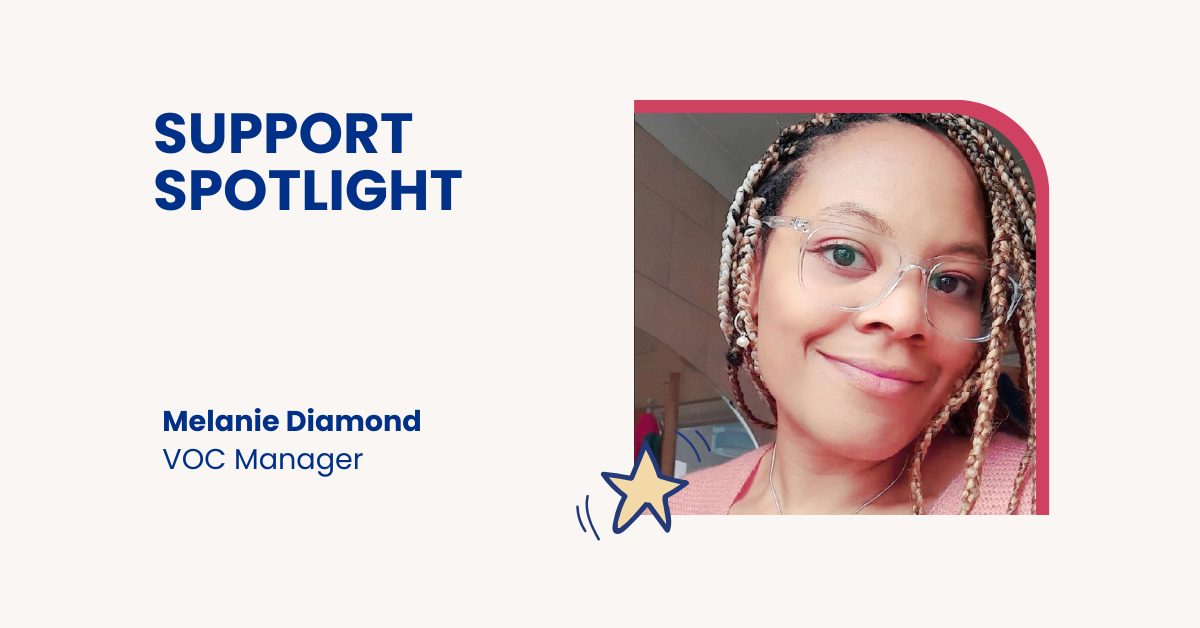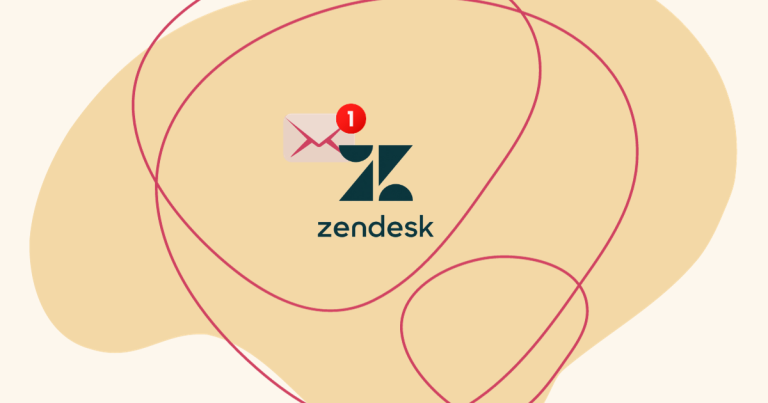Discover the story of Melanie Diamond, the Voice of the Customer Manager at Remote.com. Melanie’s expertise and innovative approach have been instrumental in shaping her organization’s deep understanding of their customers’ needs and expectations, driving them towards becoming more customer-centric.
Can you share your story with us? How was your journey towards working in customer experience?
My journey began at Microsoft, where I started as a support engineer in the advertising department. This experience allowed me to develop a deep understanding of what it takes to create successful CX strategies and execute them effectively. Managing outsourced teams supporting Microsoft advertising products and tools taught me how to be empathetic and understand the customer’s perspective. This has been invaluable in my career because without understanding what the customer wants, you are left in limbo.
Being empathetic is important to me personally, and it has become even more relevant now that I work at Remote, which is an HRIS company, where I deal with employees and their livelihoods. It’s crucial to use empathy and understand the customer and client’s needs, especially when it affects their livelihoods, such as incorrect provision or payment of benefits. Having a clear understanding of what the customer wants, planning effectively, and having empathy from the get-go can lead to great CX outcomes and customer satisfaction.
How do you balance data-driven decision making with empathy when communicating insights and improvements?
At the moment, my focus at Remote is related to CSAT and NPS. As the Voice of the Customer Manager, I gather feedback from our clients and customers, who are typically contractors and businesses with employees, as we act as their employer of record. If our customers have a negative experience with our support or if their employees face challenges with our product, it impacts their business. Our goal is to help our customers grow their businesses, and to achieve that, I use metrics like NPS to figure out how to turn detractors into product fans.
To improve and measure customer satisfaction, I connect with our users and conduct a set number of interviews with different user types every month, such as customers, employees, and contractors. I compare last month’s detractor numbers to this month’s and analyze the changes made to the product. I also look at emotional triggers such as payroll time, and then I work with the product team to identify ways to decrease detractor numbers by introducing notifications and links to help articles. I also use data tools like Mixpanel to understand where the product could be improved and why people are spending more time on certain pages.
We’re revising our metrics and considering incorporating customer effort and service satisfaction metrics to see if there are other levers to help improve what we do. It’s essential to capture all the different sentiments and touchpoints within a customer’s user journey. By doing this, I hope to gain valuable insights to bring back to the product team and continue to improve our already excellent product.
What would you say are your biggest challenges now, and what do you think are the main challenges for CX in general?
One challenge I’m currently grappling with is the AI output quality in various tools due to the lack of a dedicated sentiment tool. To tackle this, I’m using ChatGPT and Notion’s AI to assist with sentiment analysis. However, incorrect predictions or irrelevant results are occasional hurdles, and I’m always reviewing the AI’s results to ensure its relevance.
There are always going to be some challenges when you first start using AI. I often question the output that AI provides now, but at the same time, there are so many pros with it. It’s helped me do lots of trending analysis for hundreds of different pieces of contextual feedback that we get and has saved me a great amount of time in understanding trends and themes within our customer feedback.
Another challenge I’m facing is keeping up to date with all the different changes in technology as well as keeping up to date with what our competitors are doing. I use LinkedIn to see how well our competitors are doing and see what other interesting new things they’re doing. You have to stay ahead of the competition or at least understand why certain companies are doing what they do.
One final challenge is getting consensus whenever I have an idea of how we should do something from a CX perspective. It’s getting consensus and buy-in from everybody else, which can be challenging because it does require understanding what other work priorities are involved. I do find that data is king and ensuring that you present the data to tell a compelling story of why changes need to be made almost always ends up in the consensus agreeing to at least investigate into making changes.
It all boils down to understanding the best ways to deal with different customers and different personas. Trying to get internal teams to buy into CX, to buy into their customer experience, can be challenging, especially when working remotely.
What inspires and drives you to stay committed to your role? What aspects of your job do you find most fulfilling and enjoyable?
What I like most about my job is gaining insights into different CX “scenarios”. In CX, it’s easy to think that you’ve seen it all and that you understand everything. However, working with different talented and skilled people and in different countries has helped me to realize, for example, that what works in one country doesn’t necessarily work in another from a customer experience standpoint.
I find the nuances and differences between cultures and regions fascinating. For instance, the speed of response is crucial everywhere, but in certain places and cultures, people might be more understanding if you do things a certain way, as long as you give them a clear explanation of why this is happening.
In customer service, people are quick to tell you the answer to a problem, but they often fail to explain why that is the answer. As an example, in my current job, whenever an agent gives a customer the answer but fails to explain why, they often receive a bad CSAT rating. I try to encourage people to understand that a good customer experience is about not just giving the answer, but also explaining why it is the answer and what we’re doing to prevent similar problems from occurring in the future. I like mentoring and helping people understand how they can turn an unpleasant experience into a good one.
I believe that technology can help us make things better. We’re currently using Zendesk, and in some cases it automatically provides customers with the answer to their support issue based on what we have in our knowledge base. However, people still crave the human touch and want to understand that the solution provided is the right one for them. Technology often misses the empathetic bit, and I hear that a lot during my customer calls. Some people just want to speak to someone on the phone, and I think that is a challenge when it comes to remote work and using technology.
Previously, you mentioned that AI is a challenge for you at work. In light of this, what are your thoughts on the current state of AI and its potential to improve your work? Additionally, what do you perceive as the greatest opportunities for implementing AI in CX?
In some cases now, AI within customer support, can predict what resolution is needed based on the questions customers ask, which reduces ticket volume and allows support teams to focus on driving other metrics and performance. AI can also predict business trends, such as the types of queries we receive and what works at certain times of the year. This could help us improve our product by making us understand what we need to be doing or looking at to make something better.
Having AI do all the data crunching is a significant help for us as well, especially for the CX specialists. It cuts down all the analysis and simplifies things from an AI perspective. Predicting potential metrics like CSAT and NPS can help us see how changes we make will affect our metrics. For example, if we add a new feature, how will it affect our NPS score? I’m hoping to start doing all of this, and it will be great to see what we need to do specifically to make improvements.
I’m always a fan of piloting ideas, and since we work with many different countries, we can use one of them to pilot a change. For instance, I have an idea to change the NPS question based on what users are doing in the product at that time. Sometimes when you look at data differently or answer different questions, it gives you a unique perspective.
How would you describe the role of customer experience and the voice of the customer in the long-term plans for Remote.com? How do you envision your department’s role in relation to the company’s objectives?
The role I am in is going to evolve. I believe that we need to step up our game when it comes to data and analytics or at least always make it top of all CX-related agendas. We have had many challenges, and not just in our company but in the tech world in general. But we are consistently working hard to stay true to our values and our overarching goal of making it easy for any company, regardless of size, to hire anyone in the world.
My current area of focus is on reviewing contractor feedback on how they are using Remote, specifically understanding how we can increase product adoption among them. To achieve this so far, I have been generating monthly reports on the customer feedback, as well as working with our internal contractor team engineers and stakeholders. While I intend to continue with this, I am also exploring other metrics that can effectively measure our progress towards this goal.
Product is our most important department, and anything we implement needs to be seamless and easy for users to understand. I want to ensure that we always have visibility into how our product is affecting our customers. To achieve this, together with our customer advocacy teams, I have been sharing more with our internal teams about all the things we can be doing better. I want to make sure that we never forget that we are not yet 100% there, and we always have room for improvement.
I think having a voice of the customer in any company is crucial. It helps with innovation, growth, and ultimately improving the customer experience. Currently, I am the only one in my team, but I hope to expand it in the future!
What advice would you give to someone starting their career in customer experience?
When it comes to customer experience, I believe that it’s crucial to put oneself in the shoes of a customer and think about what a good customer experience means to us, and how we can help deliver and promote that experience. Listening to customers and being empathetic are also key components of CX. It’s essential to show that we are taking in what they’re saying and understanding their needs. Building strong relationships with customers and peers is also vital, as CX is not just about customers, but also about the internal teams we work with.
Regular collaboration and cross-group collaboration are also essential in embedding CX in different teams. It’s necessary to jump in on product meetings and notify the right people if there are any issues that need to be addressed. Understanding the customer journey and identifying the right point of contact is also crucial.
Working at Microsoft has taught me the importance of finding the right people to speak to and understanding the customer journey. Every touchpoint in the customer journey is critical, and we need to make sure that we are providing a great experience throughout. It’s not just about fixing customer issues, but also about understanding what makes them tick and what annoys them.
When it comes to working in CX, having an open mind is essential. There are many different facets to CX, and we need to be open to all of them. Having a good mentor who has been in the business for a long time is also helpful in learning the ropes as have likely encountered many of the challenges that one may face in a CX role and can offer guidance on how to navigate them. Having a mentor can provide a sense of support and encouragement, particularly when facing complex or daunting tasks.

Melanie Diamond
Melanie Diamond is the Voice of the Customer Manager at Remote.com, a leading provider of global payroll, benefits, and compliance services for distributed teams. Melanie has over ten years of experience in customer experience management, having worked for several multinational companies in various industries. Melanie keenly understands the importance of listening to and empathizing with customers to drive better CX outcomes. She has developed several innovative approaches to customer feedback analysis and reporting that have been instrumental in driving improvements in Remote.com’s customer satisfaction scores.
Did you like the post?
You might also like:

Surveypal
Everything you need to lead and improve your customer experience. Learn more at surveypal.com, or






